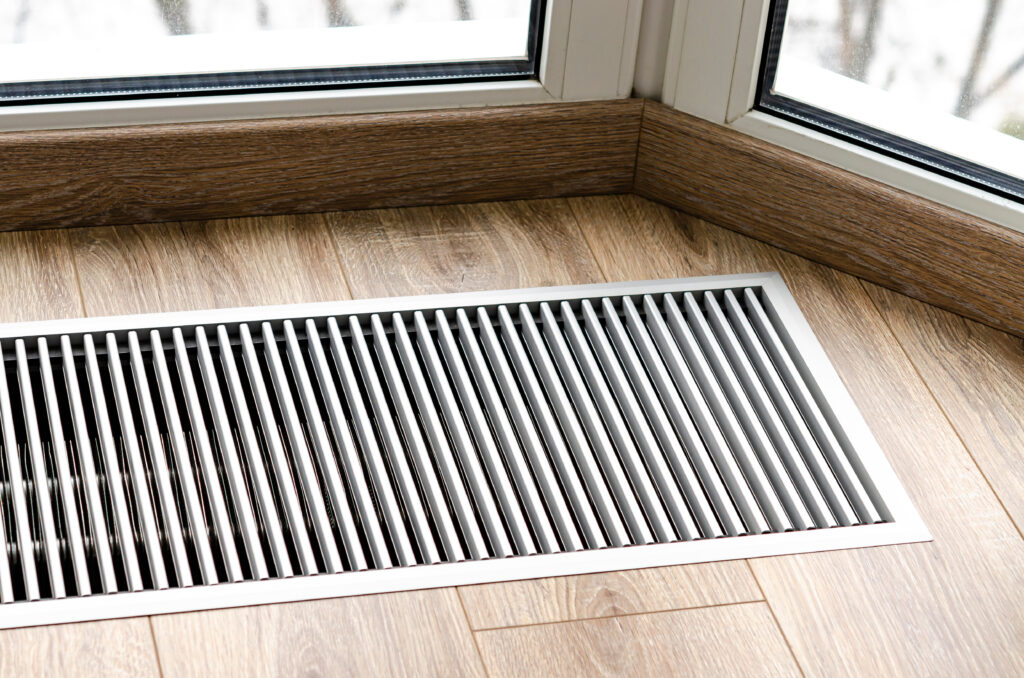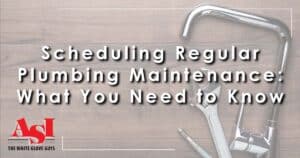If you’ve never thought about the placement of air vents in your home, that’s okay. Homebuilders do, however, have a strategy behind where vents are installed. Here we’ll go over the basics of your air vents and a few pros and cons of having floor vents or ceiling vents.
Air Supply Register and Return Grill Basics
Knowing the basics of how conditioned air circulates in your home is beneficial in case you need to explain an issue to an HVAC technician.
How do supply and return vents work?
If you’ve stood in front of an air vent and felt the conditioned air blowing out, you were in front of a supply vent. As the name implies, these vents supply your home with warm or cool air from the HVAC system.
Each room should have a supply and return vent
Without one of each vent in the room, there’s no true air circulation which can lead to a decrease in comfort and overworking the HVAC unit. Without a return vent, the room essentially shuts itself off from the HVAC and creates a temperature imbalance in the home. The HVAC struggles to find a recirculating air flow, thus causing it to work inefficiently while still producing conditioned air.
Is there a difference between an air register and an air vent?
Technically speaking, no. Vent describes every supply and return source connected to an HVAC system. Air registers usually refer to the slatted opening that has an adjustable damper to manage the air flow into a room. An air grill doesn’t move and is commonly used to cover a return vent.
Floor vents are often found in homes where heating takes priority over cooling since heat naturally rises.
- Easier to conceal: Floor vents can blend in with your home’s decor and design, such as how radiant heating blends into hardwood floors.
- High ceilings: Homes with flat ceilings or that need lots of ductwork benefit from floor vents as they normally don’t take up headspace.
Floor Vent Pros
Floor vents are often found in homes where heating takes priority over cooling since heat naturally rises.
- Easier to conceal: Floor vents can blend in with your home’s decor and design, such as how radiant heating blends into hardwood floors.
- High ceilings: Homes with flat ceilings or that need lots of ductwork benefit from floor vents as they normally don’t take up headspace.
Floor Vent Cons
However, there are two main drawbacks to floor air vents.
- Not aesthetically pleasing: Most floor vents are painted metal and the color often matches the doors and trim color for a monochromatic design.
- Extra noise: Too many homebuilders rush through installing floor vents, sometimes dropping them into place without securing them to the floor. When the HVAC system starts, the vents may rattle and create a cacophony of unpleasant sound.
Ceiling Vent Pros
Homes in warm climates where the air conditioner receives a lot of use may opt for ceiling vents since cool air sinks, allowing for more efficiency.
- Space saving: If you’re building a new home, installing vents in the ceiling gives back space since most home ceilings aren’t used in the same way a floor is.
- Easy HVAC access: By using the available attic space, you and HVAC technicians have easy access to the system and have a lower initial cost.
Ceiling Vent Cons
The ceiling air vents might be out of sight, but they do come with a few drawbacks.
- Heat transfer loss: Unless the ductwork is adequately insulated and maintained at all times, you may experience a decrease in comfort during the heat transfer.
- Extra wear and tear on HVAC system: Many attics are subject to extreme temperature swings which adds to the wear and tear on an HVAC system, leading to breakdowns and repairs.
It all depends on your personal needs
Geographic location and desired heating and cooling levels will affect whether your home has high or low air vents. But for premium comfort, you’ll want the supply vents on the outer walls and under windows with the return vents on interior walls. If placed too close together, air from the supply vent is pulled into the return without properly heating or cooling the room.
3 Ways to Help Improve Indoor Air Flow
1. Don’t Block Vents with Furniture
Though this happens more often than not, it’s important to not block the air flow to and from the air vents with furniture. This is especially true if you have floor vents. Try to keep at least one foot of clearance around and in front of the supply and return vents.
2. Replace the Air Filter
If you don’t feel as much air coming from the supply vents, check the air filter. A clogged filter won’t allow an adequate amount of air into the HVAC system and in turn, causes less air to filter into the home.
3. Schedule an HVAC Tune-Up
Dust, dirt, and other small debris frequently builds inside the HVAC system and ductwork. Regular HVAC tune-ups allow for a full system inspection and repairs as needed so your air vents, whether floor or ceiling, keep your home comfortable year-round.
No matter where the air vents are located in your home, keeping them and the HVAC system in shape is the best way to enjoy being indoors.
Need a HVAC tune-up? Contact the HVAC pros at ASI today.











